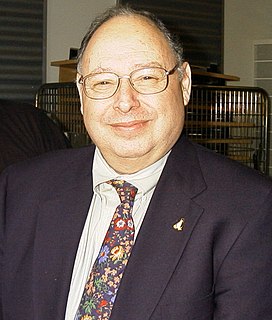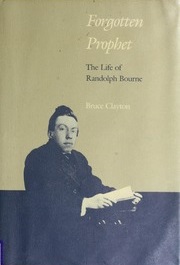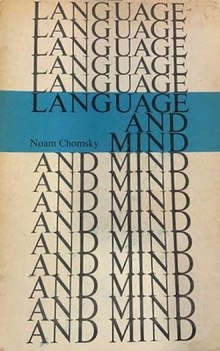Leonard Bloomfield was an American linguist who led the development of structural linguistics in the United States during the 1930s and the 1940s. His influential textbook Language, published in 1933, presented a comprehensive description of American structural linguistics. He made significant contributions to Indo-European historical linguistics, the description of Austronesian languages, and description of languages of the Algonquian family.

Avram Noam Chomsky is an American linguist, philosopher, cognitive scientist, historian, social critic, and political activist. Sometimes called "the father of modern linguistics", Chomsky is also a major figure in analytic philosophy and one of the founders of the field of cognitive science. He holds a joint appointment as Institute Professor Emeritus at the Massachusetts Institute of Technology (MIT) and Laureate Professor at the University of Arizona, and is the author of more than 100 books on topics such as linguistics, war, politics, and mass media. Ideologically, he aligns with anarcho-syndicalism and libertarian socialism.
Cognitive linguistics is an interdisciplinary branch of linguistics, combining knowledge and research from cognitive psychology, neuropsychology and linguistics. Models and theoretical accounts of cognitive linguistics are considered as psychologically real, and research in cognitive linguistics aims to help understand cognition in general and is seen as a road into the human mind.

Generative grammar is a linguistic theory that regards linguistics as the study of a hypothesised innate grammatical structure. A sociobiological modification of structuralist theories, especially glossematics, generative grammar considers grammar as a system of rules that generates exactly those combinations of words that form grammatical sentences in a given language. The difference from structural and functional models is that the object is placed into the verb phrase in generative grammar. This purportedly cognitive structure is thought of being a part of a universal grammar, a syntactic structure which is caused by a genetic mutation in humans.

Peter Henry Salus is a linguist, computer scientist, historian of technology, author in many fields, and an editor of books and journals. He has conducted research in germanistics, language acquisition, and computer languages.
Harry Hoijer was a linguist and anthropologist who worked on primarily Athabaskan languages and culture. He additionally documented the Tonkawa language, which is now extinct. Hoijer's few works make up the bulk of material on this language. Hoijer was a student of Edward Sapir.

Syntactic Structures is an influential work in linguistics by American linguist Noam Chomsky, originally published in 1957. It is an elaboration of his teacher's, Zellig Harris's, model of transformational generative grammar. A short monograph of about a hundred pages, Chomsky's presentation is recognized as one of the most significant studies of the 20th century, and in 2011 was selected by Time magazine as one of the 100 most important nonfiction books ever written. It contains the now-famous sentence "Colorless green ideas sleep furiously", which Chomsky offered as an example of a grammatically correct sentence that has no discernible meaning. Thus, Chomsky argued for the independence of syntax from semantics.
Keith Sedgwick Donnellan was an American philosopher and Professor of Philosophy at the University of California, Los Angeles.
A diaphoneme is an abstract phonological unit that identifies a correspondence between related sounds of two or more varieties of a language or language cluster. For example, some English varieties contrast the vowel of late with that of wait or eight. Other English varieties contrast the vowel of late or wait with that of eight. This non-overlapping pair of phonemes from two different varieties can be reconciled by positing three different diaphonemes: A first diaphoneme for words like late, a second diaphoneme for words like wait, and a third diaphoneme for words like eight.
This is a list of writings published by the American author Noam Chomsky.

Aspects of the Theory of Syntax is a book on linguistics written by American linguist Noam Chomsky, first published in 1965. In Aspects, Chomsky presented a deeper, more extensive reformulation of transformational generative grammar (TGG), a new kind of syntactic theory that he had introduced in the 1950s with the publication of his first book, Syntactic Structures. Aspects is widely considered to be the foundational document and a proper book-length articulation of Chomskyan theoretical framework of linguistics. It presented Chomsky's epistemological assumptions with a view to establishing linguistic theory-making as a formal discipline comparable to physical sciences, i.e. a domain of inquiry well-defined in its nature and scope. From a philosophical perspective, it directed mainstream linguistic research away from behaviorism, constructivism, empiricism and structuralism and towards mentalism, nativism, rationalism and generativism, respectively, taking as its main object of study the abstract, inner workings of the human mind related to language acquisition and production.

History of the Theory of Numbers is a three-volume work by L. E. Dickson summarizing work in number theory up to about 1920. The style is unusual in that Dickson mostly just lists results by various authors, with little further discussion. The central topic of quadratic reciprocity and higher reciprocity laws is barely mentioned; this was apparently going to be the topic of a fourth volume that was never written.

Russian Rebels, 1600–1800, is a 1972 history book by Paul Avrich about four popular rebellions in early modern Russia and their relation to the 1905 and 1917 Russian revolutions.

The Haymarket Tragedy is a history book by Paul Avrich about the Haymarket affair and the resulting trial.
Partisans of Freedom: A Study in American Anarchism is a 1976 history book about the history of anarchism in the United States by William O. Reichert.
Anton-Hermann Chroust was a German-American jurist, philosopher and historian. Chroust was a professor of law, philosophy, and history, at the University of Notre Dame from 1946 to 1972. Chroust was best known for his 1965 book on the American legal profession titled The Rise of the Legal Profession in America.
The American as Anarchist: Reflections on Indigenous Radicalism is a history book about the role of Protestantism, capitalism, and American geography in developing American libertarian sentiment.

Forgotten Prophet: The Life of Randolph Bourne is a book-length biography of American writer Randolph Bourne written by Bruce Clayton and published by Louisiana State University Press.
Taylor Stoehr (1931–2013) was an American professor and author. He edited several volumes of Paul Goodman's work as his literary executor.

Reflections on Language is a 1975 book in which the linguist Noam Chomsky argues for a rationalist approach to human nature in which human capability is seen as innate rather than a blank slate upon which psychological and social forces act (empiricism). The New York Times selected the book as among the year's best.










